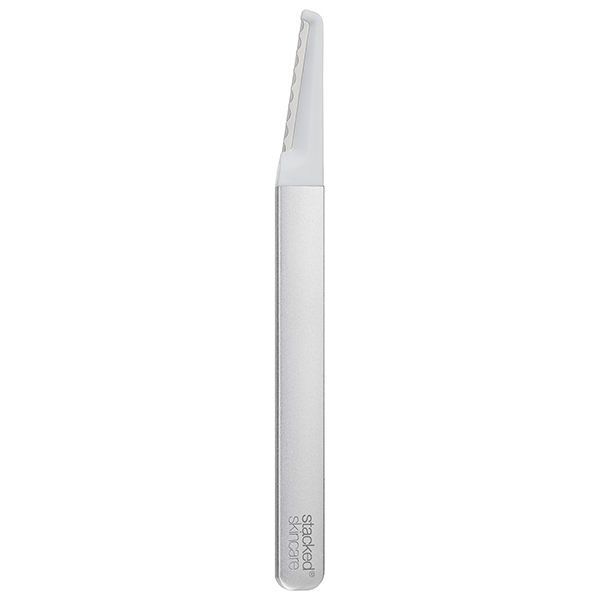What’s the Deal with Dermaplaning?
Ariana DiValentino
Do you remember, four or five years ago (or about one millennium in internet time), when articles and videos of beauty gurus shaving their faces were in everyone’s feed?
So, that’s kind of what dermaplaning is. (Kind of, anyway.)
If you do remember that trend, you might remember that the supposed aim was to not only remove unwanted hair, but also leave skin nicely primed for makeup. Whether you tried it or just kept scrolling, you should know that the bloggers weren’t pulling the idea out of a hat. The basic concept has merit, and it’s actually performed as a cosmetic treatment in clinical settings.
What Does Dermaplaning Do?
Dermaplaning is a non-invasive procedure wherein a physician uses a fine blade to shave off peach fuzz, and more importantly, dead skin cells. Essentially, it’s exfoliation: the idea is that removing dead cells that are still hanging around on your skin will reveal newer, healthy ones underneath.
Sometimes dermaplaning is done in conjunction with a chemical peel because freshly dermaplaned skin is believed to better absorb topical treatments. And, just like the exfoliating treatments you use at home, dermaplaning purports to diminish the appearance of wrinkles and scars.
As is the case with many cosmetic treatments, there isn’t a ton of reliable research backing up its efficacy. But some plastic surgeons and their patients swear by it. Many surgeons suggest it as a good “lunchtime” treatment, with virtually no downtime and minimally visible side effects.
After the procedure, you might notice your skin looking brighter right away, with full results becoming clearer over the next couple of days. Because dermaplaning is supposed to clear away about three weeks’ worth of dead cell buildup, you can expect results to last about that long, with peak glowiness lasting about a week post-op.

Can You Do Dermaplaning at Home?
Yup, at-home dermaplaning is a thing. Professional dermaplaning can cost as much as $200-250 per treatment, which can start to add up if you like the results and want to do it regularly. If that’s you, then you might consider investing in an at-home dermaplaning tool. Both manual and electric tools exist, and both have safety features that the pro tools don’t, so use whichever you’re more comfortable with. Just keep in mind that results likely won’t be as precise as when performed by a trained professional, and you may have a higher risk of nicking yourself or causing infection, especially when you’re still getting the hang of it.
Risks of Dermaplaning
There are risks anytime you go under the knife, even if that knife is only scraping the surface. But overall, dermaplaning is considered safe, and serious adverse effects seem to be pretty uncommon.
The most common side effects are tightness, redness, and sensitivity, and skin may also scab over as it heals. Patients may experience the formation of small whiteheads or enlarged pores after the procedure, but those tend to be minor and transient. The biggest risk with dermaplaning is the possibility of changes in pigmentation, causing darker or lighter spots to appear. Scarring and infections are also possible, though uncommon.
If you’re considering a professional dermaplaning treatment, be sure to find a trusted doctor and be vigilant about following their aftercare guidance.








